Get in Touch With Attiroof
For top-tier, custom roofing solutions, trust Attiroof. Our commitment to quality and service is unmatched. Reach out to start your project today.
Apr. 12, 2024
Roof Tile Maintenance
Choosing the right roof for a school transcends the mere functionality of protection; it plays a pivotal role in fostering a conducive learning environment and embodies the institution's commitment to excellence and sustainability. This guide delves into the intricate considerations essential for outfitting educational facilities with roofs that do more than just cover heads. It explores how a thoughtfully selected roof can align with the school's architectural vision, enhance energy efficiency, and stand the test of time—ensuring the well-being of its occupants and the planet. Tailored for the discerning needs of school administrators and planners, this article offers a comprehensive overview of roofing choices, costs, and benefits, equipping them with the insights needed to navigate this complex landscape. Embark on this journey to uncover strategies for selecting a roof that elevates the educational milieu, ensures safety, promotes environmental stewardship, and optimizes fiscal resources.

Selecting a durable and long-lasting roof is essential for schools, ensuring a safe and consistent learning environment while balancing costs over time. This segment delves into the importance of such a choice.
The significance of a durable roof for educational institutions cannot be overstated. A robust roofing system safeguards against the elements, ensuring that students, faculty, and staff are protected from weather adversities, which is paramount to creating a safe and comfortable learning environment. The stability provided by such a roof also minimizes disruptions caused by leaks or structural damages, allowing educational activities to proceed uninterrupted. Beyond the immediate benefits, a durable roof contributes to a healthier indoor environment by preventing mold and mildew growth, thus reducing potential health risks and enhancing the overall learning experience.
When considering long-term investments for school infrastructure, the roofing system stands out as a significant decision point, particularly from a cost-benefit perspective. A durable roofing option, while possibly more expensive upfront, can yield substantial savings and advantages over its lifespan. To illustrate this, let's delve into a comparative analysis using hypothetical data and projections.
Initial Cost vs. Long-Term Savings
1. Upfront Investment:
Standard Roof: $50,000 initial cost, with an expected lifespan of 15 years.
Durable Roof: $75,000 initial cost, with an expected lifespan of 30 years.
2. Maintenance and Repair:
Standard Roof: Estimated $2,000 annually, increasing to $4,000 in the last 5 years due to more frequent repairs.
Durable Roof: Estimated $1,000 annually, with minimal increases due to superior durability.
3. Energy Efficiency:
Standard Roof: Average annual energy cost savings: $1,000.
Durable Roof: Enhanced insulation and materials provide average annual energy cost savings of $2,500.
Projected Costs Over 30 Years
1. Standard Roof:
Initial investment: $50,000
Total maintenance and repair: $45,000 ($2,000 x 15 + $4,000 x 5)
Total energy savings: -$30,000
Total cost over 30 years (including a replacement after 15 years): $115,000
2. Durable Roof:
Initial investment: $75,000
Total maintenance and repair: $30,000 ($1,000 x 30)
Total energy savings: -$75,000
Total cost over 30 years: $30,000
The data suggests that while the durable roof requires a higher initial outlay, the long-term savings on maintenance, repair, and energy costs significantly offset this initial investment. Over a 30-year period, the durable roof is not only more cost-effective but also offers enhanced stability and energy efficiency, contributing to a better learning environment and reduced environmental impact.
This cost-benefit analysis demonstrates the importance of considering long-term implications when selecting a roofing system for schools. Investing in durability and energy efficiency can lead to significant financial savings and a more sustainable infrastructure, underscoring the value of forward-thinking in educational facility management.
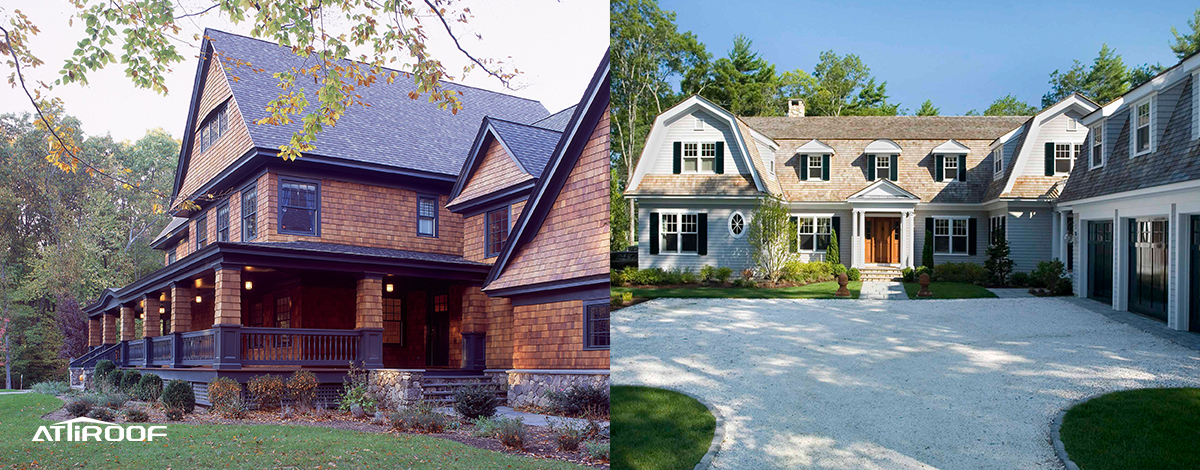
Building on the crucial foundation of selecting a durable and long-lasting roof, our focus shifts toward the architectural harmony of educational spaces. This narrative is tailored for those at the helm of creating and maintaining inspiring educational environments—administrators, facility managers, and architects. It lights the way to informed roofing choices, beyond the mere practicalities of shelter and energy efficiency, delving into the aesthetic considerations that define the character of a school. As we embark on a detailed look at how roofing materials can complement and enhance campus architecture, this guide promises insights into marrying form with function. It advocates for a choice that not only stands resilient against the elements but also harmoniously integrates with the school's architectural identity, uplifting the educational atmosphere.
Stone-coated metal roof tiles are the epitome of versatility, blending the classic beauty of traditional roofing materials with the unmatched durability of metal. Ideal for schools looking to harmonize modern functionality with historical or classical architectural styles, these tiles can add an element of timeless elegance. For buildings like the main administration or historic classroom blocks, stone-coated tiles offer an aesthetic that respects the past while embracing the resilience needed for the future. Their variety in color and style makes them adaptable to a range of design narratives, from colonial to renaissance-inspired campuses.
Asphalt shingles stand out for their affordability and adaptability, making them a go-to for a wide range of school building projects. Whether the goal is to complement a contemporary academic building or to provide a cost-effective solution for large, utilitarian structures like gymnasiums and auditoriums, asphalt shingles can meet the need without compromising on style. Their broad spectrum of colors and textures allows them to support or enhance the architectural design, whether it be blending with the natural surroundings or adding a pop of color to create a vibrant learning environment.
Synthetic resin tiles bring a modern flair to school roofing, offering durability, lightweight properties, and a sleek look that can elevate the design of new-age educational facilities. Perfect for innovative learning centers, science labs, or tech-focused academies, resin tiles can be customized to fit unique architectural designs, supporting creative expressions and futuristic aesthetics. Their resilience to extreme weather conditions makes them suitable for geographical areas prone to harsh climates, ensuring that the school's infrastructure remains intact and functional, year after year.
Clear polycarbonate roof sheeting transforms spaces by inviting natural light into the school environment, an ideal choice for enhancing communal areas like libraries, cafeterias, or indoor sports facilities. This material can create a sense of openness and connection with the outdoors, promoting a healthy, energized learning atmosphere. Especially suitable for eco-friendly and sustainable architectural designs, polycarbonate sheeting can support the growth of indoor gardens or green spaces, contributing to the school’s environmental education goals. Its use in skylights or atriums not only accentuates architectural features but also plays a significant role in reducing energy consumption by maximizing daylight use.
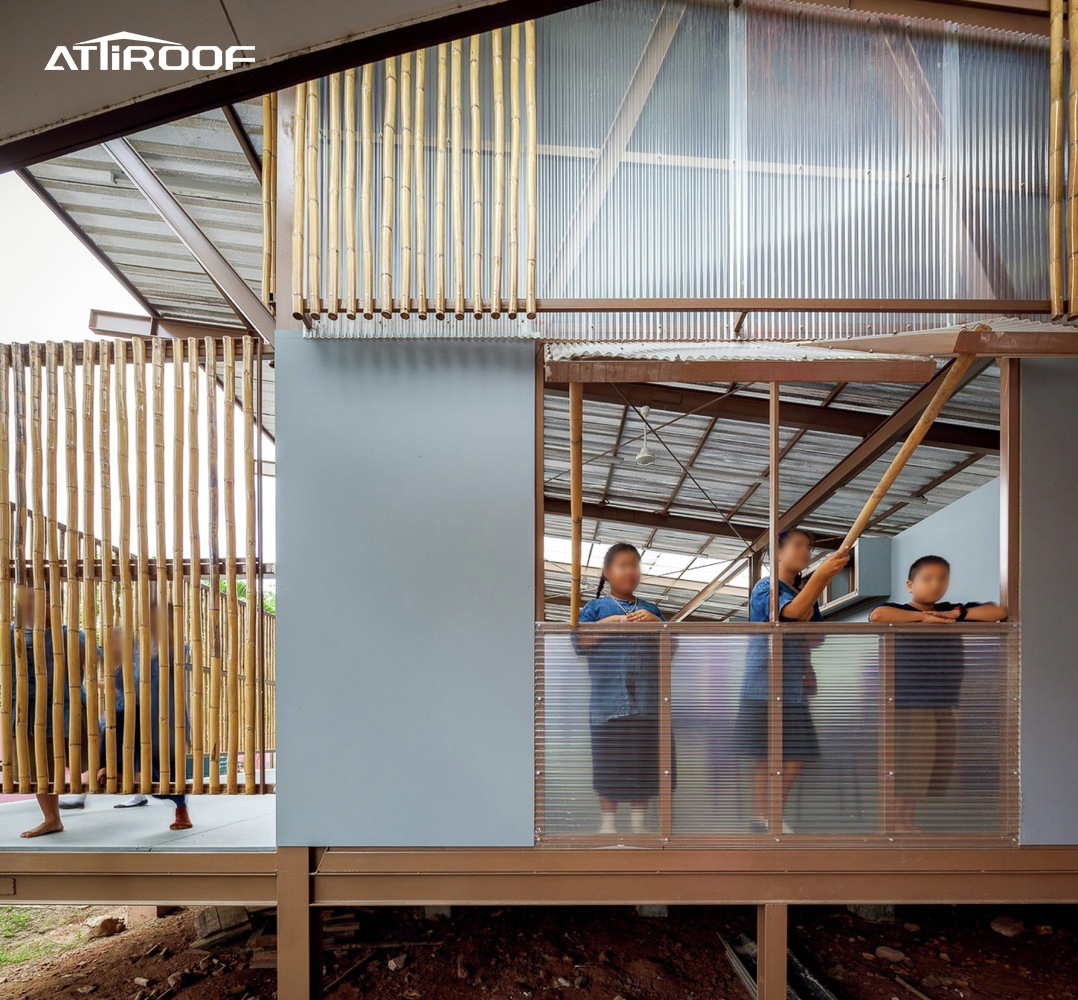
Each of these roofing materials offers unique advantages that, when thoughtfully applied, can significantly enhance the aesthetic and functional quality of school buildings. By matching the right material with the appropriate architectural style and building function, schools can achieve a harmonious and effective educational environment.
The financial implications of selecting a roof for a school are a significant consideration, encompassing more than just the initial price tag. Understanding both the upfront costs and the lifecycle expenses of different roofing systems is essential for making a decision that aligns with the school's long-term financial planning. Furthermore, it's important to be aware of the hidden costs that can arise during installation and maintenance, which can impact the total cost of ownership. Let's break down these aspects to provide a clearer picture of what to expect from different roofing options.
Stone-Coated Metal Roof Tiles: While the upfront cost of stone-coated metal roof tiles is generally higher than some alternatives, their lifespan is substantially longer, often exceeding 50 years with minimal maintenance requirements. Their durability and energy-efficient properties can lead to cost savings over time, making them a wise long-term investment.
Asphalt Shingles: Asphalt shingles are known for their affordability and are among the most commonly used roofing materials. They typically last 15-30 years and will require periodic maintenance and earlier replacement compared to stone-coated metal tiles. Over a 30-year period, the lower initial cost may be offset by the need for multiple replacements and repairs.
Synthetic Resin Tiles: These tiles provide excellent durability and impact resistance, often with a lifespan comparable to metal tiles but with a lower upfront cost. They require minimal maintenance and are lightweight, which may reduce installation costs. Over time, their longevity and low maintenance can result in a favorable lifecycle cost.
Clear Polycarbonate Roof Sheeting: This material is often used in specific areas to enhance natural lighting, which can reduce energy costs associated with lighting during daytime. The upfront cost can be moderate, but the benefits of energy savings and the long lifespan can make them a cost-effective choice for certain applications.
For a school's financial planning, it's beneficial to look at the costs spread out over the expected life of the roofing:
Roofing Material | Upfront Cost (per sq ft) | Average Lifespan (years) | Maintenance Cost (over 30 years) | Total Lifecycle Cost (over 30 years) |
Stone-Coated Metal Roof Tiles | $7 - $10 | 50+ | Low | Cost-effective over time |
Asphalt Shingles | $2 - $4 | 15-30 | Medium | Higher when considering replacements |
Synthetic Resin Tiles | $5 - $7 | 50+ | Low | Economical with minimal maintenance |
In this analysis, the apparent savings from lower upfront costs can be deceptive, as ongoing maintenance and replacement costs can accumulate, particularly for materials with shorter lifespans like asphalt shingles. On the other hand, materials with higher initial costs, such as stone-coated metal roof tiles, may prove to be more economical over decades of use. Moreover, specialty products like clear polycarbonate sheeting, while not used for entire roofing projects, can contribute to energy efficiency and long-term savings when applied strategically.
Considering these factors, schools must weigh their immediate budget against future expenses, ensuring their investment today will continue to pay off well into the future.
When budgeting for a new roof, schools must consider not only the visible costs of materials and labor but also the less obvious expenses that can accumulate over time. These hidden costs include factors such as the longevity of the roofing material, energy efficiency, maintenance frequency, and the potential need for specialized installation. Below is a table that outlines these hidden costs for stone-coated metal roof tiles, asphalt shingles, synthetic resin tiles, and clear polycarbonate roof sheeting:
Roofing Material | Durability | Energy Efficiency | Maintenance Frequency | Specialized Installation Needs |
Stone-Coated Metal Roof Tiles | High | High | Low | Moderate |
Asphalt Shingles | Moderate | Moderate | High | Low |
Synthetic Resin Tiles | High | High | Low | Low |
Clear Polycarbonate Roof Sheeting | Moderate | High | Moderate | High |
*Durability is a measure of how well the material withstands environmental factors over time.
*Energy Efficiency reflects the material's ability to reflect sunlight and insulate the building, affecting heating and cooling costs.
*Maintenance Frequency indicates how often maintenance tasks need to be performed to ensure the longevity of the roofing material.
*Specialized Installation Needs take into account the level of expertise required for proper installation, which can impact initial labor costs.
Examples of Hidden Costs:、
Disposal and Removal: Replacing an old roof may involve disposal fees that vary based on local regulations and the size of the roof.
Repair and Replacement: Cheaper materials may need more frequent repairs or earlier replacement, leading to additional future costs.
Energy Consumption: Poorly insulated or non-reflective roofs can lead to higher energy bills, while materials like stone-coated metal or resin tiles provide better energy efficiency.
Installation Challenges: Some materials, like clear polycarbonate sheeting, may require more complex installation procedures or specialized framing support, leading to higher labor costs.
To ensure a comprehensive financial plan, it is crucial to anticipate these hidden costs and integrate them into the total projected expenditure for the chosen roofing material. Decision-makers should work closely with contractors and architects to assess these potential costs and develop an accurate budget that reflects the true investment required for their roofing project.
Energy-efficient roofing stands as a beacon of modern school infrastructure, significantly reducing utility bills while contributing to a more sustainable future. Let’s explore how this investment translates into direct benefits for educational institutions.
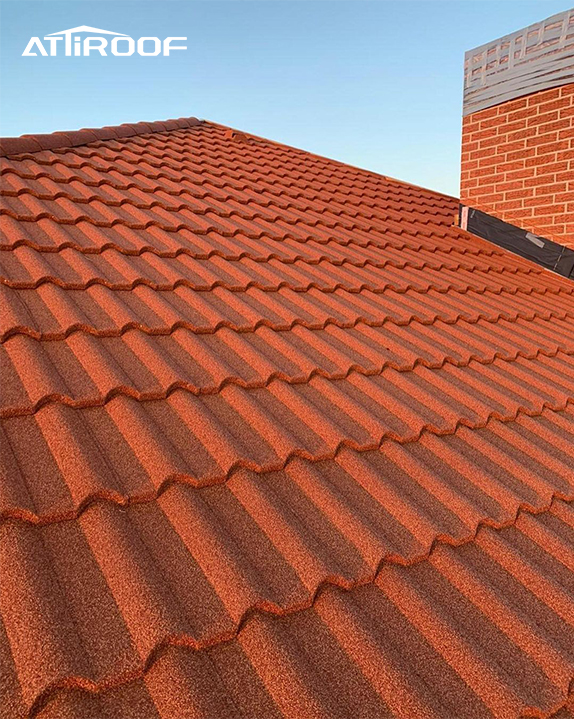
Reflective roofing materials are designed to reflect more sunlight and absorb less heat than traditional roofing materials. By incorporating stone-coated metal tiles, which have reflective properties, schools can benefit from lower roof temperatures and a reduced need for air conditioning, leading to significant cost savings. To quantify these benefits, consider a hypothetical scenario where a school replaces a non-reflective roof with stone-coated metal tiles:
Roofing Material | Average Temperature Reduction | Estimated Annual Energy Savings |
Stone-Coated Metal Roof Tiles | 10-15°F | 10-20% of cooling costs |
Insulation plays a critical role in energy-efficient roofing by maintaining a stable indoor temperature and reducing the burden on heating and cooling systems. Clear polycarbonate sheeting, for instance, can provide excellent thermal insulation while allowing natural light, which can further reduce lighting costs. Here’s a simplified table showcasing the potential energy savings with well-insulated roofing:
Roofing Material | Insulation Quality | Estimated Annual Energy Savings |
Clear Polycarbonate Roof Sheeting | High | 5-15% of total energy costs |
An energy-efficient roof does more than save on bills; it fosters a comfortable and conducive learning environment and serves as a real-world example of environmental stewardship to students. By understanding and mitigating the hidden costs in roofing, schools can ensure their investment in energy-efficient roofing systems delivers both financial and educational returns.
A roof is a fundamental element in the architecture of a school, serving as a silent guardian of the ongoing pursuit of knowledge within its walls. Following our examination of how energy-efficient roofing plays a critical role in creating a sustainable and cost-effective educational environment, it is equally important to address the longevity and upkeep of such an investment. In the dynamic environment of a school, a well-maintained roof is a key player in the safety, security, and uninterrupted operation of the institution. By ensuring effective preventive maintenance strategies are in place, a school can extend the service life of its roofing system, ultimately supporting the educational process without disruption. Let’s now focus on the necessary maintenance protocols for the various roofing systems, highlighting their role in preserving the vitality and integrity of the educational experience.
For stone-coated metal roof tiles, maintenance is relatively low-key but vital for ensuring the long-term durability of the roof. Periodic checks for the integrity of the sealant, fasteners, and flashing will help prevent leaks and corrosion. Clearing debris and ensuring that gutters and downspouts are clean will prevent water accumulation and damage.

Asphalt shingles require more frequent inspections to check for cracked, curled, or missing shingles, especially after severe weather events. Keeping the roof free of moss and algae can prevent deterioration and extend the life of the shingles.
Synthetic resin tiles are lauded for their durability and minimal maintenance. However, inspections to ensure that they are securely fastened and free from buildup can prevent issues related to water infiltration or wind uplift.
For areas with clear polycarbonate roofing, it's essential to keep them clean to maintain their light-transmitting properties. Regular cleaning to remove dirt, leaves, and other debris will ensure maximum light penetration and prevent the material from becoming brittle.
Each roofing material may encounter specific issues over its lifespan. For metal tiles, watch for signs of dents or scratches that can lead to rust. With asphalt shingles, look out for granule loss, which can indicate that the shingles are nearing the end of their life. Synthetic resin tiles may suffer from discoloration or warping due to UV exposure, which should be checked to ensure the material's integrity. Polycarbonate sheeting may develop yellowing or haziness; prompt replacement of affected panels will maintain the aesthetic and functional benefits of the roofing.
In conclusion, regular maintenance is the key to avoiding costly repairs and ensuring that each roofing system protects the school as designed. By establishing a maintenance routine suited to the specific needs of the roofing material, schools can ensure a staff.
When it comes time to replace a school's roof, the stakes are high and the margins for error are slim. A roof replacement is a significant undertaking, and missteps can be costly. Here are common mistakes that schools should avoid to ensure a smooth, successful roofing project.
One of the first mistakes many schools make is not establishing a clear budget. Without a defined budget, costs can quickly spiral out of control. A budget should account for all aspects of the roofing project, including materials, labor, unexpected repairs, and even potential temporary accommodations for classes if necessary during the replacement.
While staying within budget is essential, selecting a roofing system based solely on price can lead to higher long-term costs. Cheaper materials might not withstand the wear and tear of a school environment, leading to more frequent repairs or replacements. Investing in a more durable, albeit slightly more expensive, roofing system can be more economical over time.
Schools can benefit from cooperative purchasing contracts that allow them to procure roofing systems at a lower cost. These contracts leverage the collective purchasing power of multiple schools to negotiate better terms with suppliers and contractors, yet they are often overlooked.
Timing is critical when it comes to roofing projects. Choosing the wrong time of year can lead to delays due to weather conditions, which can disrupt school operations. Planning the replacement during school breaks or dryer seasons can minimize educational interruptions and potentially reduce costs.
Roofing a school is not the same as roofing a home. It requires a company with experience in large-scale projects. An experienced firm will be better equipped to handle the unique challenges of a school roofing project, from safety to scale.
Moisture can wreak havoc on a school building, leading to mold, mildew, and structural damage. It is essential to ensure that the new roofing system includes adequate moisture protection measures, such as proper insulation, vapor barriers, and ventilation.
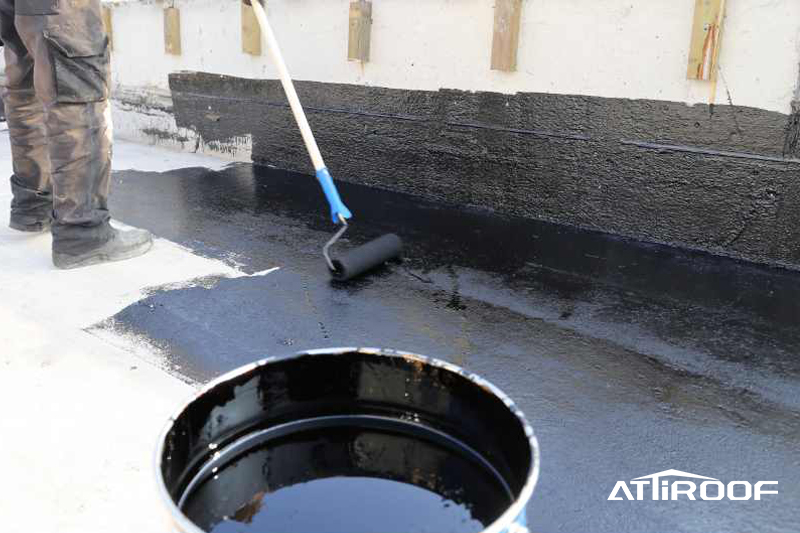
Avoiding these common mistakes can save a school time, money, and headaches. It ensures that the new roof will be a lasting investment that protects both the students' education and the school's physical assets.
As stewards of progress and education, schools have a unique opportunity to lead by example in adopting innovative roofing technologies. These advancements not only reflect an institution's commitment to sustainability and modernization but also offer tangible benefits in cost savings and educational value. Let's delve into the reasons schools should embrace these technologies.
Green roofing systems, which may include vegetative layers or specialized reflective materials, offer a plethora of advantages. They act as natural insulation, reducing energy costs by keeping buildings cooler in the summer and warmer in the winter. They also improve air quality, reduce stormwater runoff, and create habitats for local wildlife, thus contributing to biodiversity. Furthermore, they provide students with a living laboratory for environmental and scientific learning.
Cool roofing systems reflect more sunlight and absorb less heat than standard roofing materials, significantly reducing energy costs for cooling buildings. They can lower rooftop temperatures by up to 50 degrees Fahrenheit, prolonging the life of the roof and providing a more comfortable learning environment.
Solar roofing is another frontier where schools are uniquely positioned to benefit. Integrating photovoltaic panels into roofing materials can turn an entire rooftop into a power generator, slashing utility bills and even generating revenue by selling excess power back to the grid. Beyond economics, solar roofing serves as a daily, visible commitment to renewable energy, educating students about sustainability and energy independence firsthand.
Incorporating these innovative roofing technologies not only has immediate benefits but also sets a precedent for future generations. Schools that adopt such measures exemplify foresight and responsibility, qualities they aim to instill in students, making the buildings themselves part of the educational experience.
In the realm of educational facilities, the safety and health of students and staff are paramount. The roofing material and design play a significant role in ensuring these priorities are met. Let's explore how.
Safety begins with selecting roofing materials that minimize fire risk and toxicity. Materials like metal roofing and tiles made from clay or concrete offer superior fire resistance compared to traditional asphalt shingles or wood shakes. Additionally, these materials typically emit lower levels of volatile organic compounds (VOCs), ensuring a healthier environment for the school community. Schools located in areas prone to wildfires or extreme weather should particularly consider these materials for their enhanced safety features.
A well-designed roof contributes significantly to the ventilation and overall air quality inside a school building. Proper ventilation systems not only regulate temperatures but also reduce moisture levels, preventing the growth of mold and mildew that can compromise air quality and health. Incorporating features such as ridge vents, soffit vents, and skylights can improve air circulation and natural light, creating a more pleasant and productive learning environment. Moreover, selecting roofing materials and coatings that reflect sunlight can reduce heat absorption, thereby minimizing the need for air conditioning and enhancing indoor comfort.
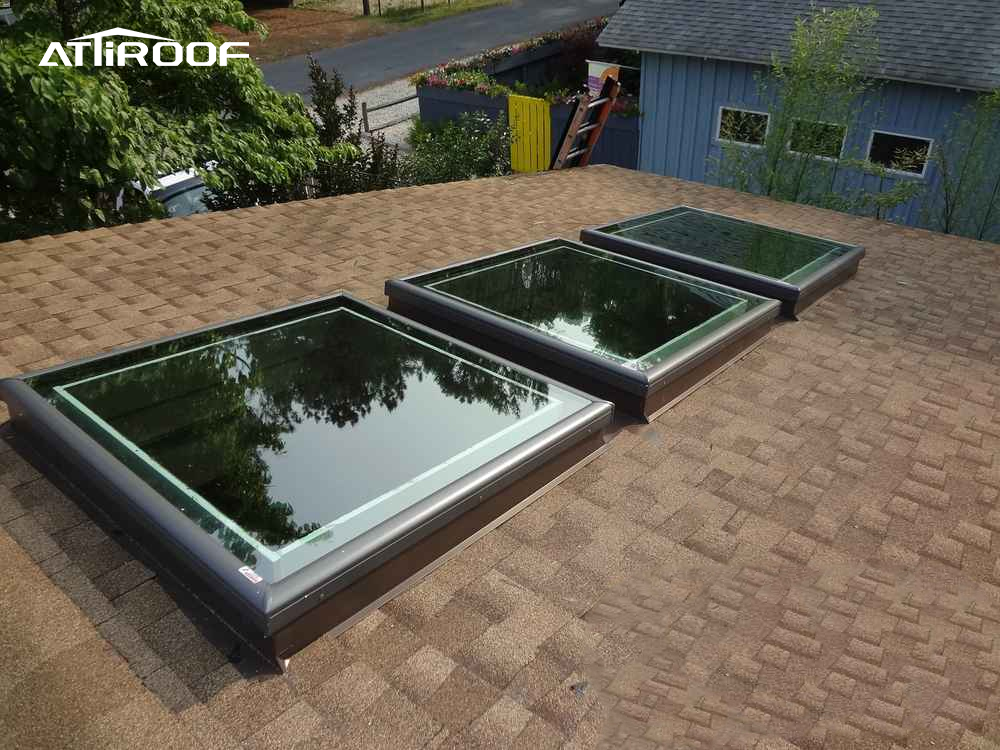
The choices made in roofing materials and design have a direct impact on the safety, health, and comfort of school environments. By prioritizing fire resistance, low toxicity, and effective ventilation, schools can provide a safer and healthier learning atmosphere that supports student well-being and academic success. These considerations not only protect against immediate hazards but also contribute to a sustainable and resilient infrastructure that upholds the health and safety of the educational community for years to come.
The acoustic environment of a school plays a pivotal role in the effectiveness of teaching and learning. Noise can be a significant distraction, reducing students' ability to concentrate, comprehend, and retain information. The roof, as a critical component of the school's infrastructure, can significantly influence the acoustic performance of educational spaces.
The design of a school's roof can greatly affect its ability to reduce external noise from entering the building. Factors such as the roof's shape, slope, and the materials used in its construction contribute to its sound insulation properties. A well-designed roof can minimize the intrusion of unwanted sounds, such as traffic, aircraft, and outdoor activities, creating a quieter, more focused learning environment. Incorporating elements like sound-absorbing insulation and choosing designs that deflect sound can further enhance a roof's noise reduction capabilities.
Below is a table that outlines the noise reduction capabilities of various roofing materials, measured in decibels (dB). The data presents a comparative look at how each material can mitigate external noise, contributing to a quieter, more conducive learning environment.
Roofing Material | Noise Reduction (dB) | Comments |
Stone-Coated Metal Tiles | 30-35 | High-density material offers excellent noise reduction, ideal for areas with high external noise. |
Asphalt Shingles | 20-25 | Moderate noise reduction, suitable for standard school environments. |
Synthetic Resin Tiles | 25-30 | Lightweight yet effective in noise dampening, offering a balance between performance and cost. |
Clear Polycarbonate Sheeting | 15-20 | Lower noise reduction, best used in conjunction with other noise mitigation strategies. |
Traditional Clay Tiles | 30-35 | Similar to stone-coated metal, provides excellent noise insulation due to material density. |
Green Roofing Systems | 40-45 | Superior noise reduction due to vegetation layer, also offers thermal insulation benefits. |
Selecting the right roofing material with consideration for its noise reduction capability is a strategic decision that can significantly enhance the educational experience, allowing students to focus better and teachers to communicate more effectively, free from the distractions of external noise.
Advancements in roofing materials and technologies have introduced new opportunities for improving the acoustic performance of schools. Materials like green roofs, which consist of vegetation layers, not only provide excellent thermal insulation but also naturally absorb sound, reducing noise pollution. Similarly, specialized acoustic tiles and membranes can be integrated into roofing systems to dampen sound vibrations. Innovations such as these enable schools to achieve superior acoustic environments, supporting the educational process by allowing students and teachers to communicate more effectively in a disturbance-free atmosphere.
Understanding the importance of acoustic performance in educational settings underscores the need for careful consideration of roof design and material choices. By prioritizing acoustics in roofing decisions, schools can enhance the quality of their learning environments, contributing to better educational outcomes and the overall well-being of their communities.
The realm of warranties and insurance in roofing is intricate but crucial for schools to understand and navigate effectively. These safeguards can mean the difference between a minor adjustment and a significant expense down the line. Here’s how to approach these topics wisely.
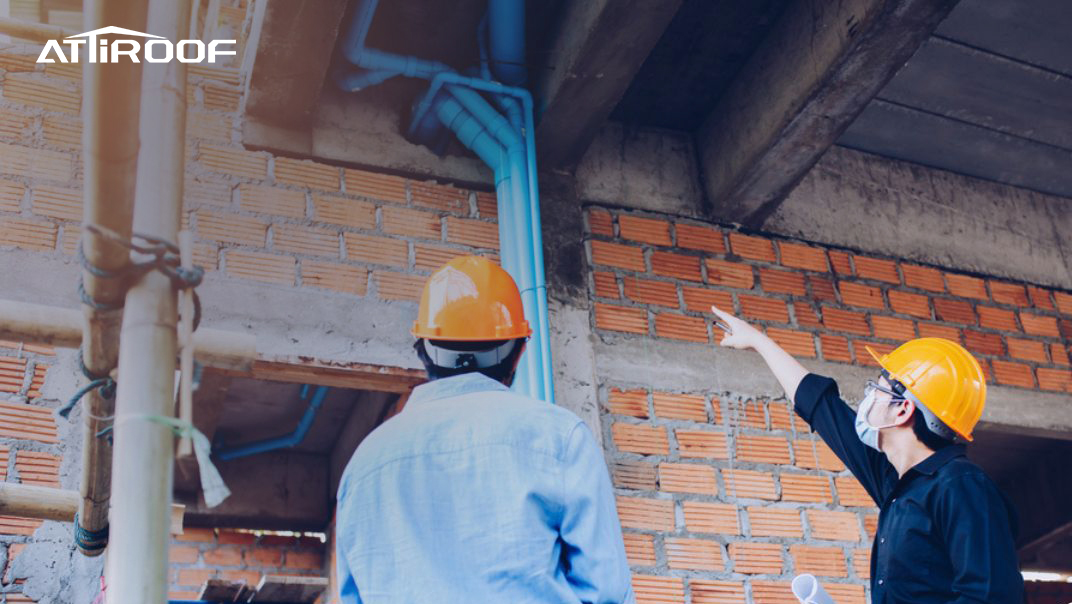
Warranties for roofing materials and workmanship are pivotal in ensuring that your investment is protected against defects and premature failures. However, the devil is often in the details:
Material Warranties cover the roofing materials themselves, typically against manufacturing defects that could cause them to fail prematurely. It’s essential to note the duration of these warranties and what specific circumstances they cover.
Workmanship Warranties are provided by the contractors who install the roof and cover errors in installation. These vary greatly in length and terms, so understanding what actions or failures are covered is crucial.
To navigate warranties effectively, schools should:
1. Read and understand all warranty documents before finalizing any contracts.
2. Clarify ambiguous terms with the manufacturer or contractor to ensure there are no misunderstandings about coverage.
3. Keep detailed records of all warranty information, contracts, and communication in case a claim needs to be filed.
Roofing insurance policies complement warranties by covering damage caused by unforeseen events like extreme weather. For schools, it’s important to understand how their policy works with their roofing choice:
Review your policy annually to ensure it reflects the current value and condition of your roof, especially after a replacement or significant repair.
Understand what damages are covered by your policy. Some policies may have exclusions for specific types of events or damages, such as wind or hail.
Know the process for filing a claim and what documentation will be required. This often includes proof of maintenance and inspections.
Effectively managing the warranties and insurance for your school’s roof requires diligence and understanding. By focusing on these areas, schools can ensure their roofing systems are not only built to last but also fully protected under the terms of their warranties and insurance policies, safeguarding their investment for years to come.
The integration of sustainability and environmental impact considerations into roofing decisions presents a unique opportunity for schools to lead by example, demonstrating a commitment to stewardship of the planet while reaping tangible benefits.
Sustainable roofing solutions, such as green roofs, cool roofs, and solar panels, offer numerous advantages for schools. These include:
Energy Efficiency: Sustainable roofs can significantly reduce energy consumption by improving insulation and reflecting sunlight, thus lowering heating and cooling costs.
Durability: Materials used in sustainable roofing are often more durable and require less maintenance, resulting in longer lifespans and reduced replacement costs.
Environmental Benefits: By reducing stormwater runoff, improving air quality, and decreasing heat island effects, sustainable roofs contribute positively to the surrounding environment.
Furthermore, the installation of solar panels on school roofs can turn buildings into power generators, creating potential savings or even revenue streams from excess energy production. This not only offsets energy costs but also provides a tangible example of renewable energy in action.
Sustainable roofs can transform into living laboratories, offering unique, hands-on learning opportunities for students. For example:
Green Roofs: These living roofs can be used to teach students about botany, ecology, and the importance of biodiversity. They also offer a space for science experiments and observations.
Solar Panels: Incorporating solar technology into the curriculum allows students to learn about renewable energy, physics, and engineering, fostering an understanding of how sustainable practices can combat climate change.
By integrating roofing choices with sustainability and environmental education, schools do not merely provide shelter; they embody the principles of ecological responsibility and lifelong learning. This approach not only enriches the educational experience but also prepares students to be informed, environmentally conscious citizens.
Securing adequate funding is a critical step in any school roofing project, allowing institutions to implement the best solutions without compromising on quality due to budget constraints. Here's how schools can tap into government and private funding opportunities and some tips for successful grant writing.
Many government agencies and private foundations offer grants and funding opportunities specifically designed for school infrastructure improvements, including roofing projects. These can significantly reduce the financial burden on schools, making sustainable and high-quality roofing systems more accessible. To navigate these opportunities:
Research available programs: Both federal and state governments, as well as private foundations, may offer funding for school roofing projects. Websites of relevant departments or foundations are good places to start.
Understand eligibility requirements: Each funding opportunity has specific eligibility criteria. Ensure your school meets these requirements before applying.
Be aware of deadlines: Application windows can be narrow. Mark deadlines on your calendar to ensure you submit all required documentation on time.
Grant writing can be a daunting task, but with the right approach, your application can stand out:
Be clear and concise: Clearly define the scope of the project, its objectives, and the benefits it will bring to the school.
Provide detailed estimates: Include detailed cost estimates and timelines for the roofing project to demonstrate thorough planning.
Highlight sustainability and safety: Emphasize how the roofing project will contribute to environmental sustainability and enhance safety for students and staff.
Show community and educational benefits: Detail how the project will positively impact the school community and contribute to educational outcomes.
Follow application guidelines meticulously: Adhere to all application guidelines and requirements. Missing or incorrect information can disqualify your application.
Accessing funding and grants for school roofing projects requires diligent research, careful planning, and compelling grant writing. By leveraging these opportunities, schools can implement roofing systems that not only protect and enhance their physical environment but also align with broader educational and community values.
In navigating the complexities of equipping your school with the right roof, this comprehensive guide has traversed a wide spectrum of considerations—from the fundamental importance of durability and architectural harmony to the nuanced benefits of energy efficiency, safety, and acoustic optimization. We've delved into the practicalities of maintenance, the pitfalls of replacement projects, and the forward-thinking approach of embracing innovative roofing technologies. The journey has illuminated the pivotal role of roofing in enhancing the educational environment, underscored the importance of sustainability, and outlined strategies for securing necessary funding.
As we conclude, it's clear that the decision to invest in a quality roofing system is a decision to invest in the future of education itself. A well-considered roof not only protects against the elements but also supports a safe, healthy, and inspiring learning environment. It speaks to a commitment to sustainability, to the well-being of students and staff, and to the stewardship of educational facilities.
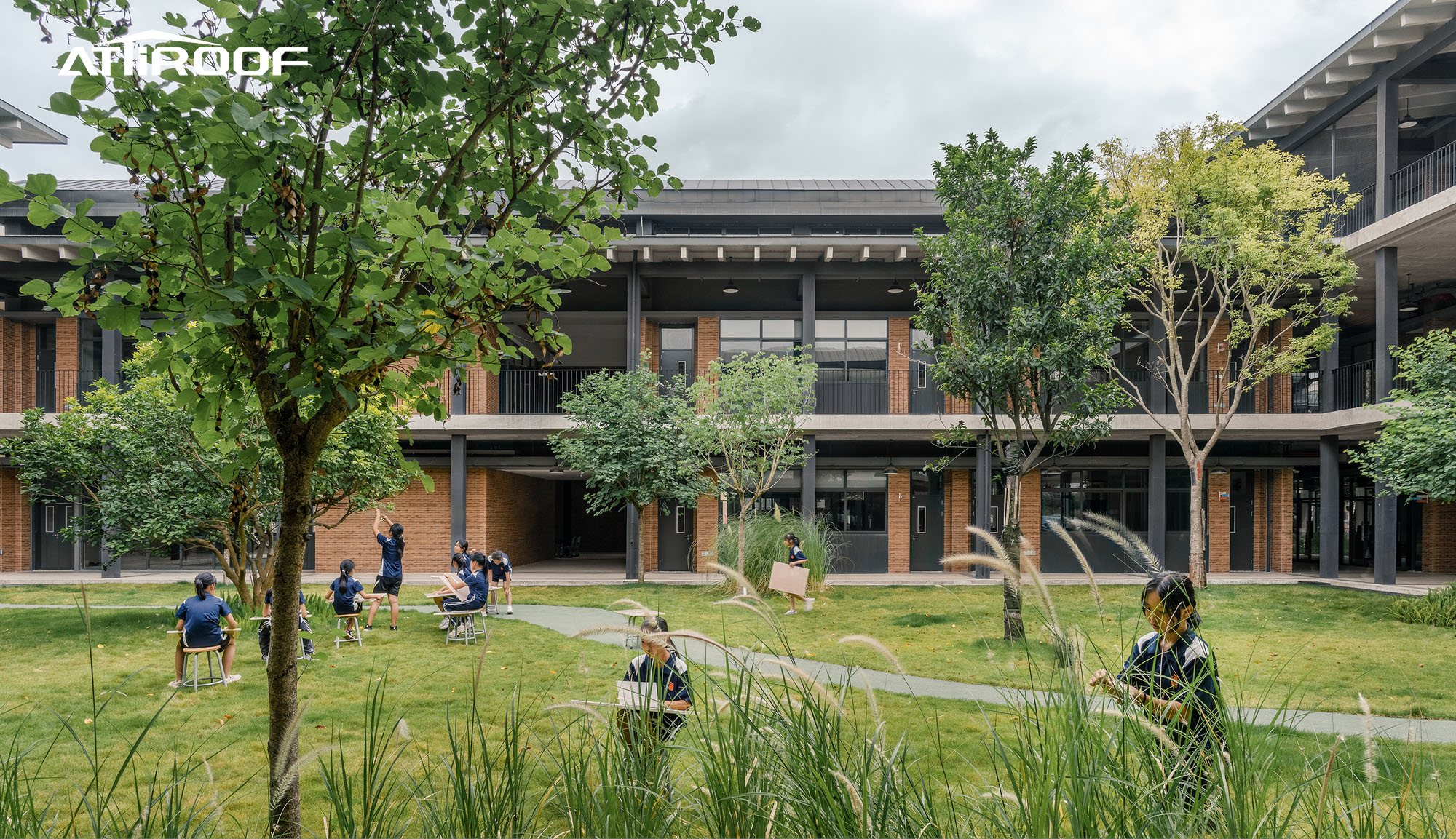
For school administrators, facility managers, and educators poised to undertake this crucial decision, the message is clear: choose wisely, plan thoroughly, and embrace the opportunities that innovative roofing solutions offer. Let this guide be your first step toward a roofing project that meets your school's needs today and lays a foundation for its success tomorrow.
We encourage you to reach out to professionals, explore funding opportunities, and engage with the wider educational community to share insights and successes. Together, let's create educational spaces that are as enduring and inspiring as the minds they nurture.
Q1: How often should a school's roof be inspected?
A: Regular inspections are crucial for maintaining the integrity of a school's roof. It's recommended to conduct professional inspections at least twice a year, typically in the spring and fall, to identify and address any potential issues before they become major problems.
Q2: Can energy-efficient roofing materials really make a difference in a school's energy bills?
A: Absolutely. Energy-efficient roofing materials, such as cool roofs or green (vegetative) roofs, can significantly reduce a building's cooling needs by reflecting sunlight and providing insulation. This can lead to noticeable reductions in energy bills, especially in warmer climates.
Q3: What should a school consider when deciding between repairing and replacing its roof?
A: The decision to repair or replace a roof depends on several factors, including the age of the roof, the extent and type of damage, and the cost implications of both options. If the roof is near the end of its expected lifespan and repairs are extensive or frequent, replacement might be the more cost-effective choice in the long term.
Q4: Are there specific roofing solutions recommended for schools in areas prone to extreme weather?
A: In regions susceptible to severe weather conditions, such as heavy snowfall, hurricanes, or high winds, it's important to choose roofing materials and systems designed to withstand these challenges. Stone-coated metal roof tiles, for example, offer high durability and wind resistance, while green roofing systems can provide added insulation and manage stormwater runoff effectively.
Previous post: The Complete Guide to Roof Tiles for Self-Occupied Housing
Next chapter: The Ultimate Guide to Choosing Villa Roof Tiles
Hot Products
Get in Touch With Attiroof
For top-tier, custom roofing solutions, trust Attiroof. Our commitment to quality and service is unmatched. Reach out to start your project today.